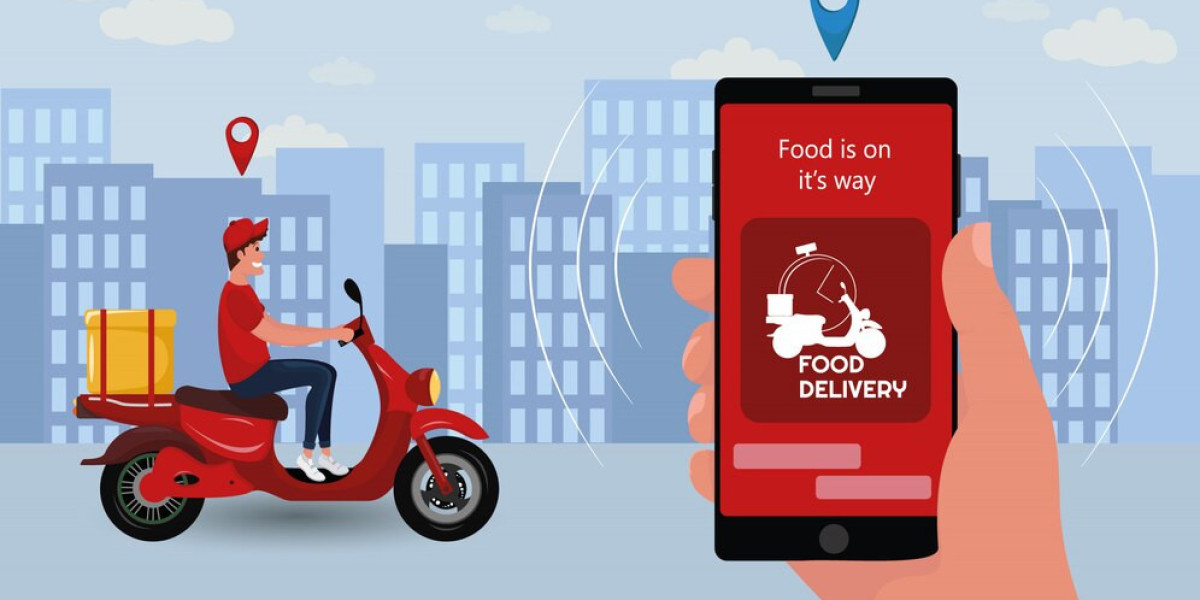Building a delivery app from scratch takes planning, the right tech choices, and a clear focus on user needs. Whether you're targeting food delivery, courier services, or local errands, your app must solve real problems and work smoothly across devices. Here’s a clear breakdown of the steps to help you get your delivery app up and running.
Why Businesses Invest in Delivery Apps
With more people ordering goods and services through their phones, businesses have shifted toward app-based delivery systems. Fast service, real-time tracking, and digital payments are now expected by users. This shift has opened doors for companies that offer reliable, on-demand services through mobile platforms.
Step 1: Define Your Delivery Model and Goals
Before diving into development, you need a clear plan. Start by setting the foundation—know what kind of pickup and delivery app solution you’re building and what goals you want to reach. This first step shapes your app’s direction, features, and overall success.
Choose the Type of Delivery App
Your app’s features depend on the delivery model you select. Here are the most common types:
Single-store model: A business manages deliveries for its own products (e.g., a local pizza shop).
Aggregator model: Multiple vendors are listed in the app, and deliveries are managed by a third-party provider (e.g., Uber Eats).
Marketplace model: Users can list requests, and providers accept tasks (e.g., TaskRabbit or Postmates).
Pick the model that aligns with your business vision and resources.
Set Clear Goals
Decide what success looks like. You might aim to reduce delivery time, increase order volume, or reach more neighborhoods. These goals guide your design and development choices later.
Step 2: Map Out Core Features
A well-functioning delivery app needs three main components: a customer app, a delivery partner app, and an admin panel.
Features for Customers
User registration/login
Product browsing and search
Order placement
Real-time tracking
In-app chat or call with drivers
Secure payment options
Ratings and reviews
Order history
Features for Delivery Partners
Registration and profile setup
Order alerts and acceptance
Navigation and map integration
Status updates (picked up, delivered)
Earnings dashboard
In-app messaging
Admin Panel Features
Vendor and delivery partner management
Order monitoring
Analytics and reports
Customer support tools
Promotions and coupon setup
Focus on building a minimum viable product (MVP) first with essential features, then gradually add more based on user feedback.
Step 3: Choose the Right Tech Stack
Your tech choices affect how well the app runs, scales, and interacts with users.
Front-End
For mobile apps:
Android: Kotlin or Java
iOS: Swift
For cross-platform:
Flutter or React Native
Back-End
Node.js, Ruby on Rails, or Django
MongoDB, MySQL, or PostgreSQL for databases
Firebase for push notifications and real-time data
APIs and Integrations
Google Maps API for tracking and routes
Payment gateways like Stripe, Razorpay, or PayPal
SMS/email services like Twilio or SendGrid
Choose a stack your team can manage and scale as your user base grows.
Step 4: Design the User Interface (UI)
Good design helps users place orders without confusion. UI-UX designers play a key role in making the app visually appealing and easy to use. They should focus on clear buttons, simple navigation, and fast-loading screens to ensure a smooth experience for every user.
Key Design Tips
Keep the layout intuitive. Don’t clutter screens with too much information.
Use colors and fonts that match your brand.
Add animations or visual cues (like a map updating in real-time) to make the app feel alive.
Make the app easy to use even for people who aren’t tech-savvy. Test early wireframes with potential users to catch problems before coding begins.
Step 5: Start the Development Process
Now, begin the actual coding. Follow agile methods to break development into short, focused sprints.
Backend First
Start with the database, API development, and server setup. Set up user authentication, store order information, and create admin control systems.
Mobile App Development
Develop the user-facing apps in parallel. Connect them with backend APIs. Handle user registration, order placement, driver matching, and notifications.
Testing at Every Stage
Perform unit tests, integration tests, and usability checks often. Testing helps you fix issues before launch and ensures all components work together.
Step 6: Implement Real-Time Tracking and Notifications
Delivery apps depend on live updates. Users want to see where their order is and when it will arrive.
Add Location Tracking
Use GPS to show the driver’s location on a map. The app should update the map every few seconds for a smooth experience.
Push Notifications
Send alerts when an order is accepted, picked up, or delivered. This keeps users in the loop and reduces support calls.
Set up fallback channels (like SMS) if push notifications fail.
Step 7: Set Up Payment and Security
Allow users to pay through multiple methods—credit cards, wallets, or cash on delivery.
Use Trusted Payment Gateways
Pick secure gateways with fraud protection and fast processing. Comply with local rules and support refunds when needed.
Secure User Data
Encrypt sensitive data, use HTTPS, and apply strong authentication methods. Security builds trust and protects your business from threats.
Step 8: Launch the App
Test the app internally first (alpha testing). After fixing major bugs, invite a small group of users to try it out (beta testing).
Collect feedback and make changes quickly. After polishing the app, submit it to the App Store and Google Play.
Prepare for Approval
Make sure your app follows each platform’s rules. Provide clear descriptions, screenshots, and contact info. Respond to review feedback to improve your rating.
Step 9: Market the App
After launch, promote your app through online ads, social media, and local partnerships.
Strategies That Work
Offer referral bonuses for users and drivers.
Partner with local shops or restaurants.
Run social media contests and giveaways.
Encourage satisfied customers to leave reviews.
Good marketing ensures people know your app exists and gives you a chance to grow early.
Step 10: Maintain and Improve the App
Post-launch, your job isn’t over. Users will request changes, report bugs, or suggest new features. Regular updates keep your app relevant.
Track User Behavior
Use analytics tools to watch how people use the app. If users drop off during checkout, look into why and fix it. Review ratings and support requests for improvement ideas.
Plan Feature Updates
Add new features slowly based on actual needs—driver bonuses, group ordering, or loyalty programs. Focus on what keeps users coming back.
Final Thoughts
Developing a delivery app from scratch takes time, patience, and a good team. From planning the business model to releasing regular updates, each step matters. Keep your users in mind, test often, and focus on simple, clear solutions. A well-built app can become a strong part of your business and help you stay ahead of the competition.








